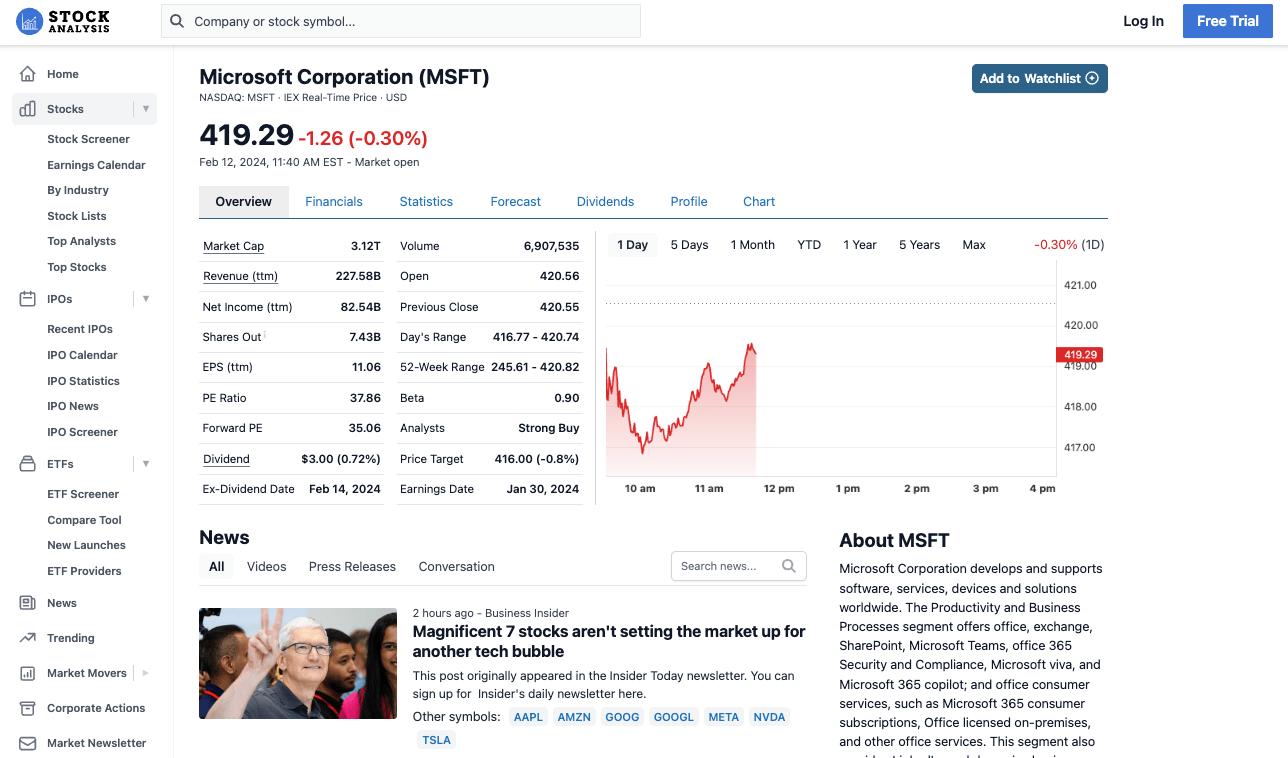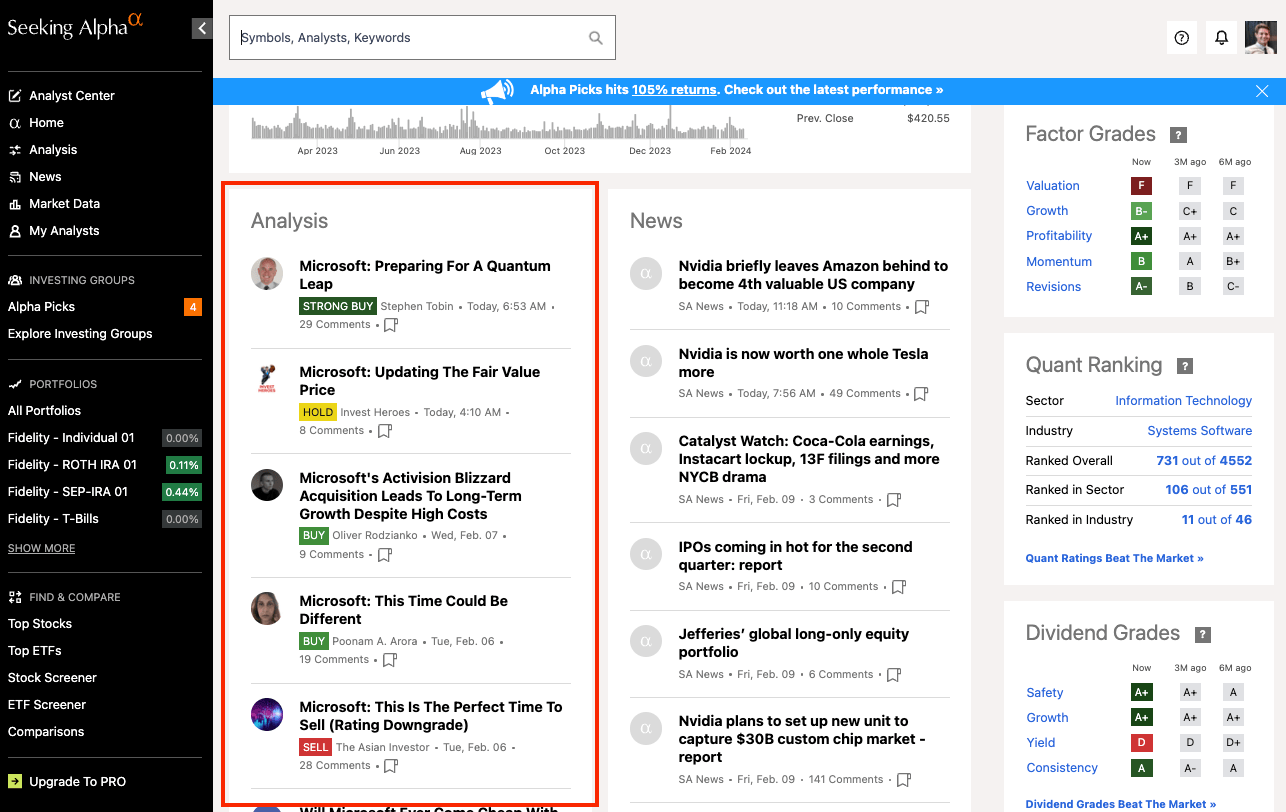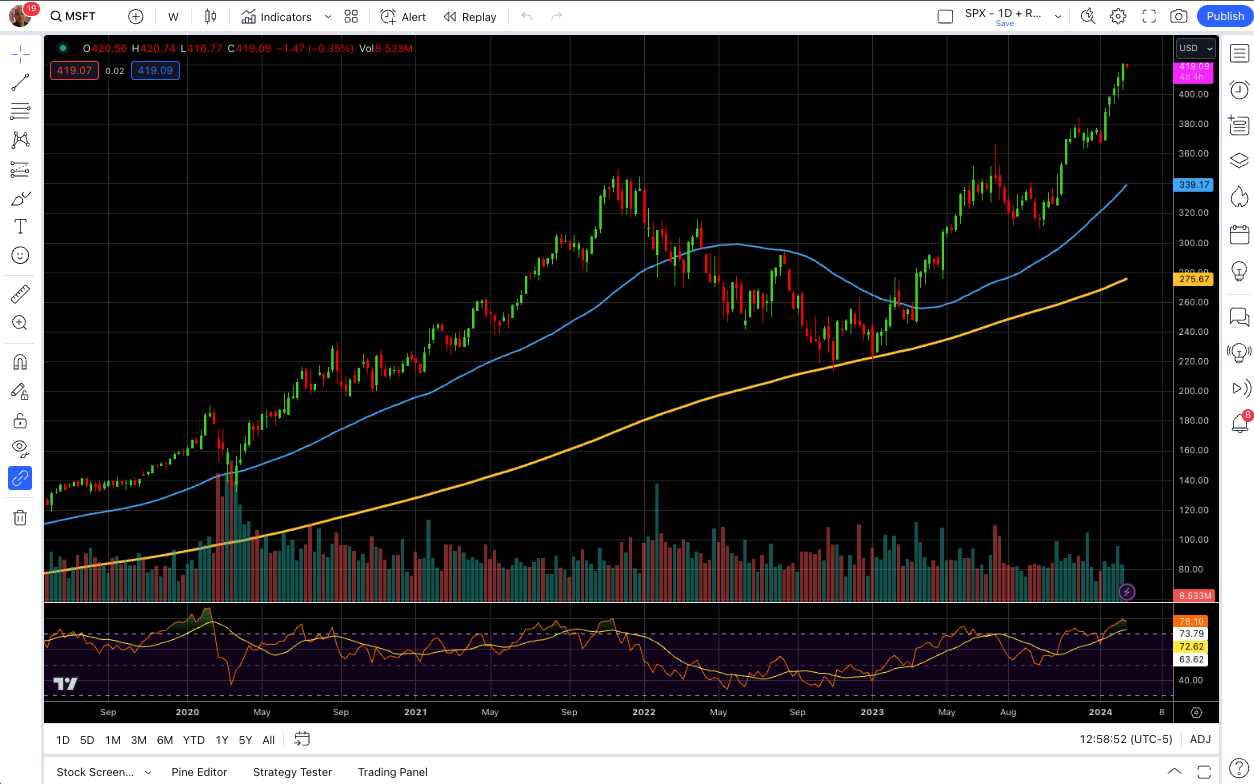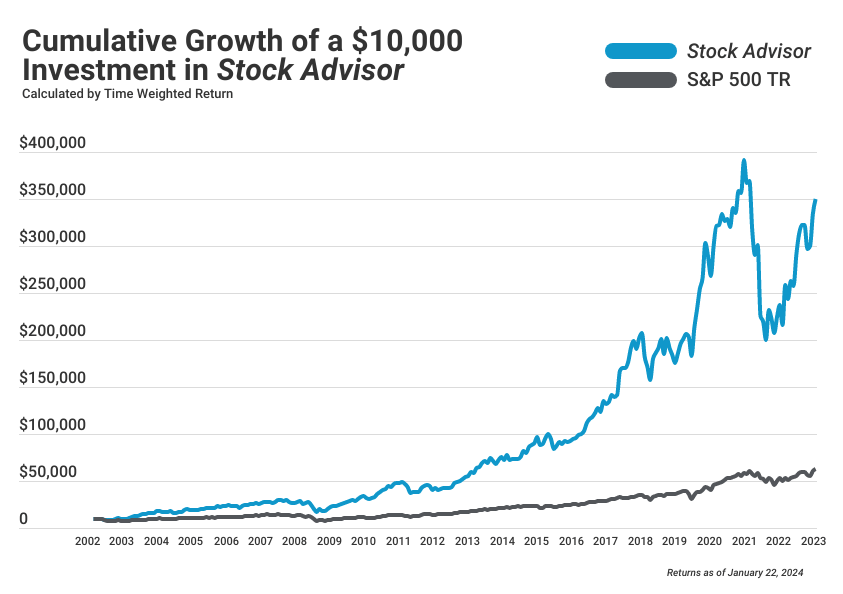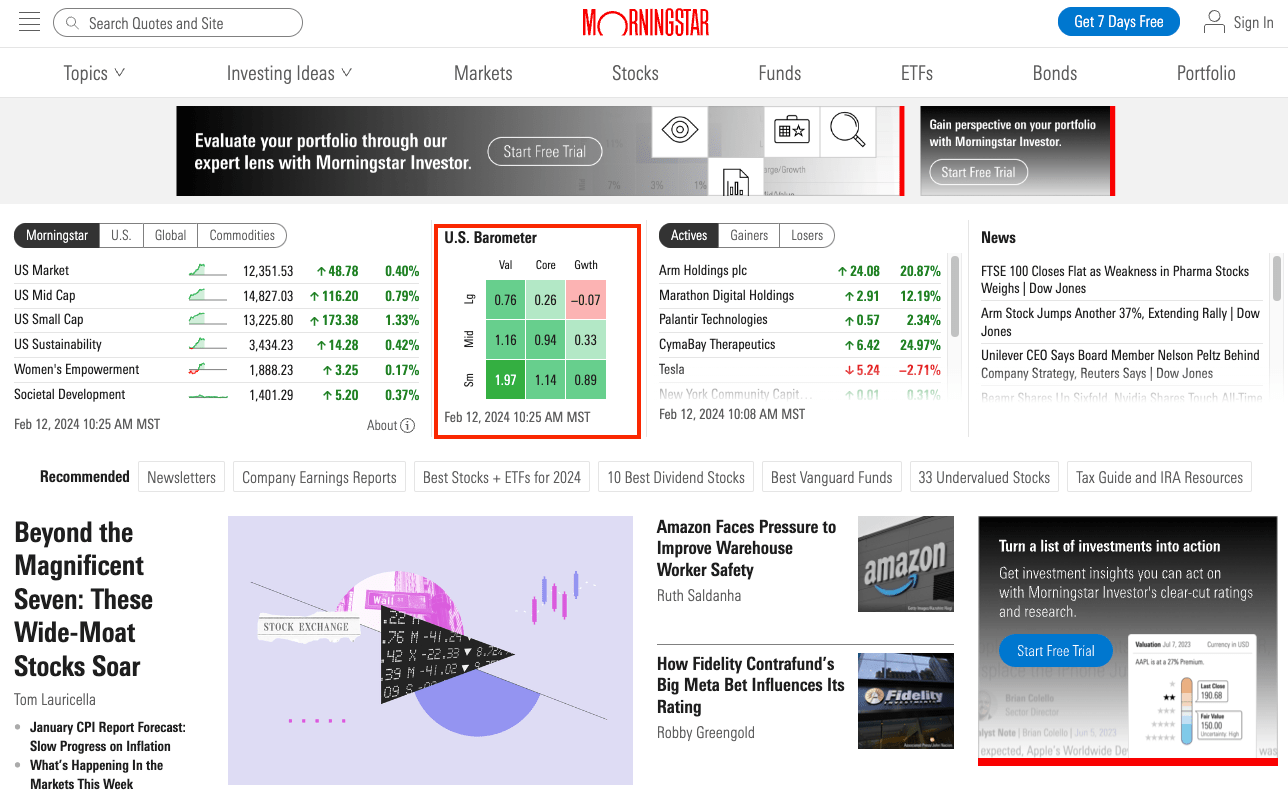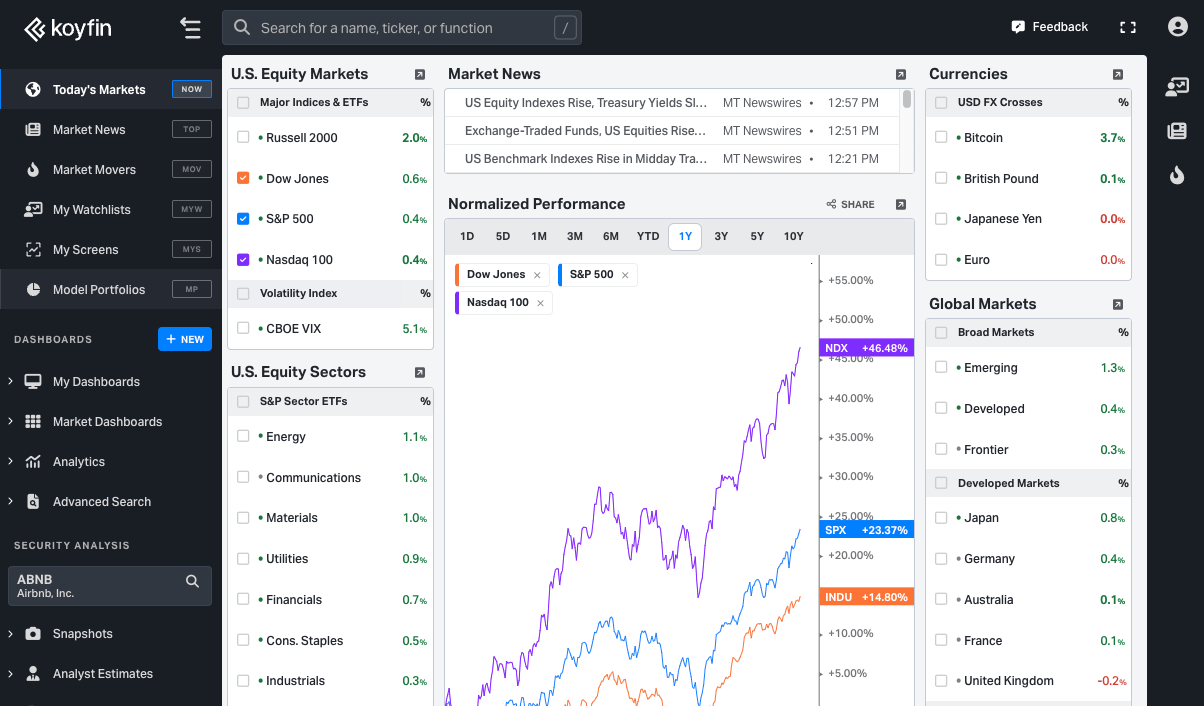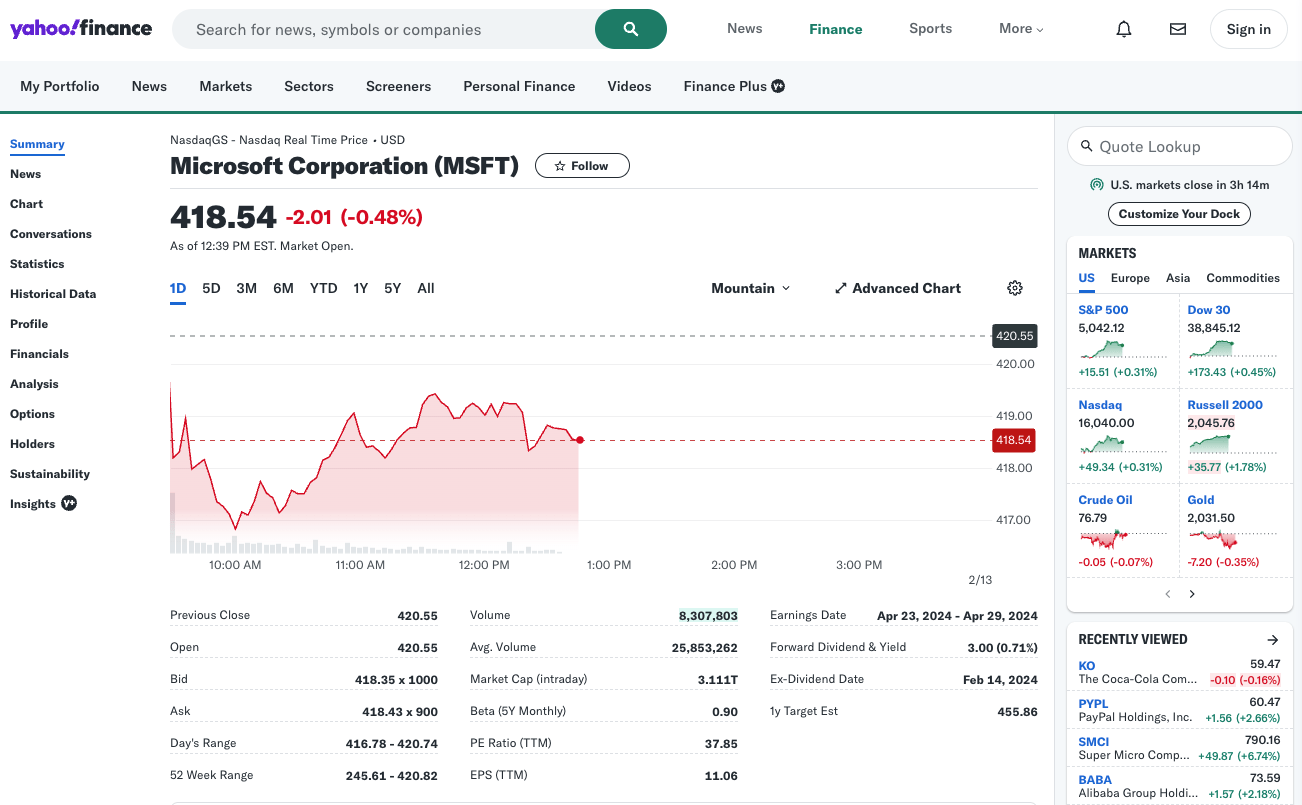The 7 Best Stock Research Websites

There are hundreds of stock research websites and tools on the internet.
Which is best for you depends on what type of investor you are, what kind of information you're looking for, and whether you want it for free or you're willing to pay.
You might need:
- Financial data
- A stock screener
- News and information
- Wall Street analyst ratings
- Charting and tools for technical analysis
Or, maybe you're looking for some combination of all of them.
With all of these use cases in mind, here's my list of the best stock websites in 2024.
A quick look at the best stock research websites
| Our pick | Best for | Pricing |
| Stock Analysis | Best overall | Free |
| Seeking Alpha | Opinionated research | Paid |
| TradingView | Charts and technical analysis | Primarily paid |
| Motley Fool | Paid stock recommendations | Paid |
| Morningstar | Mutual funds | Primarily free |
| Koyfin | Bloomberg terminal alternative | Paid |
| Yahoo Finance | The latest news | Free |
1. Best overall: Stock Analysis
Stock Analysis is the best website for free stock information for regular investors.
You can think of it like Yahoo Finance, but better — it's faster, has more comprehensive and accurate data, with a more user-friendly interface.
We pay a premium for connections to the highest-quality data sources, and pride ourselves on the depth and accuracy of our data.
In fact, we have comprehensive financial data for more than 5,600 stocks and 3,360 ETFs across the U.S. (full coverage) and international markets (in progress).
For stocks, this includes financials (income statements, balance sheets, and cash flow statements), statistics and financial ratios, dividend information, and a company profile.
You can also see analyst ratings, price targets, financial forecasts, and perform technical analysis with our advanced charts.
Another popular feature is the stock screener. There are 221 screener filters covering a broad range of qualitative and quantitative data points, so you can uncover new stock ideas with a few clicks.
All of this is completely free. And, unlike other “free” stock research websites, you won't bump into a paywall after a certain amount of usage.
Some of our other most used features include:
We also publish a daily stock market newsletter, Market Bullets. You can use it to keep up with financial markets in just a few minutes per day. The newsletter is also completely free.
You can use our watchlist features with a free account. Free accounts can add up to 5 watchlists and 25 symbols per watchlist, and you can also add your stock holdings in order to track your portfolio in real-time.
Even though almost everything on the site is free, you can also upgrade to Stock Analysis Pro to unlock export capabilities and get unlimited access to all of our data and tools. It costs just $9.99/month (or you can get an annual subscription for $79, 33% off).
2. Best for opinionated research: Seeking Alpha
On Stock Analysis, you're the lead analyst. We provide you with the data and information, but you perform the analysis, form opinions, and make decisions.
Seeking Alpha, on the other hand, provides completed investment research reports produced by thousands of its contributors.
These contributors are individual investors or teams of analysts who scrutinize investments and make buy/sell/hold recommendations based on their research.
Each article is submitted to Seeking Alpha's editors, who check it for accuracy, thoroughness, and quality. If it passes review, it is published on the site.
Altogether, Seeking Alpha publishes over 1,000 new articles per week.
In addition to its contributors' research reports, Seeking Alpha provides financial data, a stock screener, news, and Wall Street analyst ratings.
It also publishes a number of quantitative measurements that feed its Quant Ratings system, which objectively measures stocks based on their fundamentals, analyst expectations, and price performance.
I'm a subscriber to Seeking Alpha Premium because of these Quant Ratings and the contributor analysis. I find it to be well worth the $239/year for Premium.
New users can get Seeking Alpha Premium for $189 after a 7-day free trial.
I also pay for Alpha Picks, Seeking Alpha's paid stock-picking newsletter. If you're interested in my take on it, check out this Alpha Picks Review.
3. Best for charts and technical analysis: TradingView
TradingView is the best website for traders or anybody looking to perform charting and technical analysis.
Every time I use it, I'm blown away by the user interface and experience. The site is both easy to use and remarkably feature-rich, making it a great charting platform for beginner and advanced traders alike.
And I'm not alone in this sentiment. TradingView has more than 50 million users from all around the globe.
TradingView is fast, powerful, and easy to use — an excellent combination for traders. You can use it for free, but active traders will likely bump into a paywall.
I recommend the Essential ($12.95/month) or Plus ($24.95/month) plan, both of which you can try free for 30 days.
4. Best for paid stock recommendations: Motley Fool
While Stock Analysis provides you with the data and leaves the investment decisions up to you, The Motley Fool just tells you exactly which stocks to buy and when to sell.
Stock Advisor is The Motley Fool's most popular service. It is a stock-picking newsletter that focuses on buying high-quality businesses and owning them for long periods.
According to the company's site, it has returned more than 4x the S&P over the last 21 years (total average returns of 604% vs. 144%):
The Stock Advisor team sends out two stock picks per month. Each pick comes with a summary of the team's analysis and why they expect it to be a long-term winner.
The service also comes with a list of 10 “Starter Stocks,” all previous picks, community access, and additional educational resources.
If you don't want to perform your own stock research and would rather outsource it to a team that has performed well over the past two decades, then Motley Fool's Stock Advisor is worth looking into.
New members can get their first year for $89, which comes with a 30-day membership fee-back guarantee.
5. Best for mutual funds: Morningstar
Morningstar is an often overlooked website for financial research, but it shouldn't be. It's a go-to resource for financial advisors and other professionals.
I check the “Barometer” on its homepage (pictured below) every day to get a pulse on how different sections of the market are performing.
If you're a mutual fund investor, you should know about Morningstar. In my opinion, it is the best free source on the internet for aggregating information about mutual funds.
You can find the basic quote information (NAV, investment style, expense ratio, yield, turnover, etc.), performance data, risk assessments, and information on the fund's parent company.
It also grades every fund out of five stars based on its performance relative to peers.
Additionally, Morningstar is a great resource for high-quality economic and business news.
Morningstar Investor is the site's premium service and gives you access to more in-depth research, investment ratings, and a suite of portfolio management tools.
6. Best Bloomberg terminal alternative: Koyfin
Koyfin markets itself as the Bloomberg terminal for retail investors.
What's a Bloomberg terminal?
A Bloomberg terminal is a computer system that provides direct access to Bloomberg's investment data and news services. It is the gold standard for investment research and is used by more than 300,000 financial professionals around the world. It costs $2,000/month.
In my opinion, this is both good and bad.
On the bad side, Koyfin is a bit overwhelming for most retail investors. It is extremely feature-rich, fairly complex to use, and doesn't give you much information for free.
It's also pretty expensive, with plans starting at $49/month.
But on the flip side, it's an incredibly powerful and well-built stock research platform. It has complete coverage of global equities, analyst estimates and financial projections, market and sector analysis, and more.
Over one million data points, tens of thousands of symbols, and 30+ years of financial statement history — it's all here.
If you're a retail investor or someone who wants a more affordable, user-friendly alternative to a Bloomberg Terminal, Koyfin is a great place to start.
You can check it out with a 7-day free trial.
7. Best for the latest news: Yahoo Finance
Yahoo Finance has long been a popular free stock research website.
It has all of the fundamental data (financial statements, ratios, analysis, and more) you need to research thousands of stocks from around the globe.
Yahoo Finance also aggregates thousands of news articles per day from financial websites and analysts. If you're looking to get a pulse on a stock, you can check out the stock's newsfeed on Yahoo Finance.
How to choose a stock research website
There are a number of factors to consider when choosing a website to use for stock research.
However, in my opinion, it boils down to what type of investor you are, the quality of the site's data, and the cost of the service.
1. What type of investor are you?
Are you a day trader or swing trader? Are you a long-term investor? Are you retired, nearing retirement, or just starting your career?
These questions will help narrow down what type of platform you should be considering.
For instance, short-term traders likely want a site with real-time data and strong charting capabilities, like TradingView.
Long-term investors, on the other hand, may be looking for a free place to do some fundamental analysis on individual stocks or ETFs (like Stock Analysis) or mutual funds (like Morningstar).
2. Does the source provide accurate information?
If the website doesn't provide up-to-date, high-quality data, you shouldn't be using it.
When evaluating a platform, be sure to check where it's sourcing its data from. Is it connected to reputable providers? Does it even tell you where the data is from?
For example, Stock Analysis has a Data Disclaimer page that tells users we get our data from trusted providers like Nasdaq Data Link.
High-quality data isn't cheap. Be sure the site you're using isn't cutting costs by using low-quality sources.
3. Is it worth the cost?
The final consideration is cost. Some sites are free, while others are not.
Relative to the features and benefits offered, is the subscription a good value?
Don't be afraid to pay for a service. A good stock research website should more than offset its price by helping you achieve higher returns and increase your confidence in your investments.
How we chose the best stock research websites
When evaluating investing products and services, we take the following into consideration:
- Core offering: How good the product or service is — i.e., how accurate the data is, how many features the site has, and how much users like it.
- Cost: Overall price and value for money.
- Usability: What the interface looks like, how easy it is to navigate, design elements and features, and general accessibility.
- Credibility: Quality of the data as well as company and brand reputation.
- Audience: Who the product is for, the uses and applications, whether it actually works, if it's the best option available, and any limitations therein.
- Offers: Whether there is a special offer for signing up or any discounts.
Final verdict
That's my roundup of the best stock research websites in 2024.
To recap, you saw a little bit of everything on this list — from Stock Analysis, a completely free way to research stocks; to Motley Fool, a done-for-you stock recommendation service; and Seeking Alpha, which falls somewhere in between.
I also covered TradingView, which, in my opinion, is the best platform for charts and technical analysis; Morningstar, a site often forgotten by retail investors but regularly used by financial advisors; and Koyfin, the best Bloomberg alternative.
You can easily take your investing to the next level with one or several of these sites.




